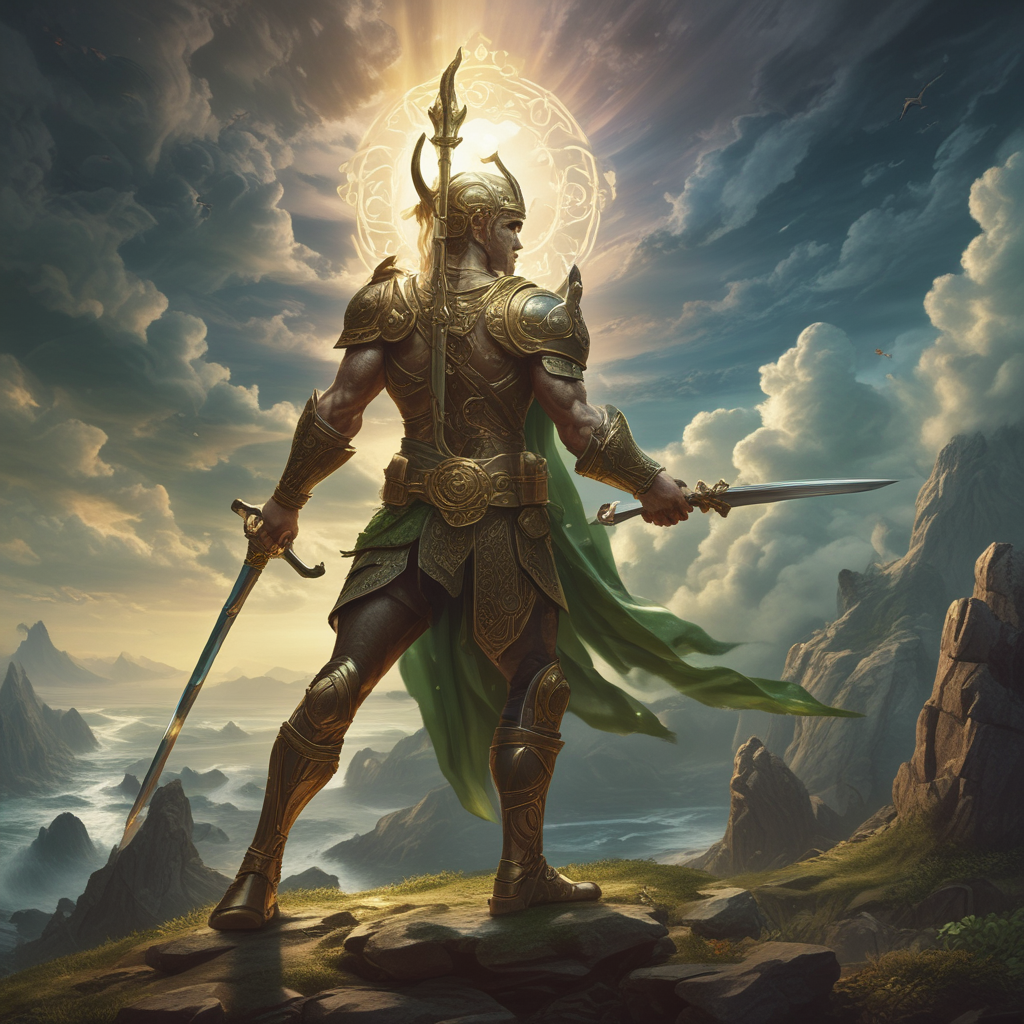Legends of the Underworld: The Myths That Haunt Us
Introduction: The Allure of the Underworld
The underworld has fascinated humanity for centuries, serving as a metaphorical and literal representation of death, the afterlife, and the unknown. Across different cultures, the concept of the underworld varies, yet it remains a common theme in mythology, literature, and folklore. These myths not only reflect societal beliefs about death and morality but also reveal deep psychological truths about our fears and hopes.
The allure of the underworld lies in its duality: it is both a place of despair and a realm of potential rebirth. As we explore the myths that haunt us, we uncover layers of meaning that speak to our shared human experience.
The Underworld in Ancient Civilizations
In ancient civilizations, the underworld was often depicted as a shadowy realm where souls would go after death. For instance, in Mesopotamian mythology, the underworld known as Kur is described in the Epic of Gilgamesh. Here, the hero Gilgamesh confronts the inevitability of death and the permanence of the afterlife.
Similarly, Greek mythology presents a complex view of the afterlife centered around Hades, the god of the underworld. Hades was not merely a place of punishment but also a realm where souls could find peace. The Greek understanding of the afterlife emphasized the importance of living a virtuous life to ensure a favorable outcome in the afterlife.
The Role of Deities in Underworld Myths
Deities play a central role in shaping the narratives surrounding the underworld. Key figures include:
- Hades – The Greek god of the underworld, Hades ruled over the dead and embodied the inevitability of death.
- Osiris – In Egyptian mythology, Osiris is the god of the afterlife, resurrection, and fertility, representing the cycle of life and death.
- Yama – In Hindu belief, Yama is the god of death who guides souls to the afterlife, emphasizing the moral choices made during life.
These deities reflect cultural beliefs about death, morality, and the afterlife, influencing how societies view existence beyond life.
Journey to the Underworld: Common Themes and Motifs
The journey to the underworld is a prevalent theme across various myths, often portraying the hero’s trials and tribulations. Notable examples include:
- Orpheus – In Greek mythology, Orpheus descends into the underworld to retrieve his beloved Eurydice, symbolizing love’s power over death.
- Dante’s Inferno – Dante Alighieri’s epic poem illustrates a vivid journey through the realms of the afterlife, exploring themes of sin, redemption, and divine justice.
These narratives often symbolize death and rebirth, reflecting humanity’s continuous struggle with mortality.
Cultural Variations: Underworld Myths Around the Globe
Underworld myths are not confined to one culture; rather, they span the globe with unique interpretations. A comparative analysis reveals both differences and similarities:
- Aztec Mictlan – The Aztec underworld, Mictlan, is a complex realm where souls journey through various challenges to reach their final resting place.
- Norse Helheim – In Norse mythology, Helheim, ruled by the goddess Hel, is a place for those who did not die in battle, reflecting the warrior culture of the Norse.
- Chinese Diyu – In Chinese beliefs, Diyu is a purgatory-like realm where souls are judged and punished according to their earthly deeds.
These myths reveal how different cultures conceptualize the afterlife, often reflecting their values, fears, and moral lessons.
The Underworld in Modern Popular Culture
Ancient myths of the underworld continue to influence modern literature, film, and video games. Examples include:
- “Hercules” – Disney’s animated film reinterprets Greek mythology, depicting Hades as a humorous yet menacing character.
- “American Gods” – Neil Gaiman’s novel explores various mythologies, including the underworld, integrating ancient beliefs into a contemporary narrative.
These reinterpretations demonstrate the enduring nature of underworld myths and their relevance in today’s storytelling.
Psychological Interpretations of Underworld Myths
From a psychological perspective, underworld myths can be analyzed through Carl Jung’s concepts of archetypes and the shadow self. The underworld often represents the unconscious mind, where hidden fears and desires reside. Confronting the underworld can symbolize a journey toward self-awareness and acceptance of one’s darker aspects.
The therapeutic implications of engaging with underworld myths are significant, as they provide a framework for individuals to confront their fears of death and the unknown, promoting personal growth and healing.
Folklore and Urban Legends: Modern Hauntings of the Underworld
Modern folklore and urban legends often draw inspiration from ancient underworld myths. These narratives shape contemporary beliefs about the supernatural and the afterlife. Case studies include:
- The Legend of La Llorona – A tale of a woman who mourns her children, echoing themes of loss and haunting reminiscent of ancient myths.
- The Mothman – Urban legends about the Mothman often incorporate themes of foreboding and the unknown, paralleling fears surrounding the afterlife.
These modern hauntings highlight the continued influence of underworld narratives in shaping societal fears and cultural perceptions.
The Underworld as a Reflection of Human Morality
Underworld myths often serve to convey moral lessons and societal values. They address themes of judgment and redemption, emphasizing the consequences of one’s actions in life. For instance:
- In Greek mythology, the souls of the dead are judged by Hades and the three judges: Minos, Rhadamanthus, and Aeacus, determining their fate in the afterlife.
- In the Christian tradition, the concept of hell serves as a moral deterrent, encouraging virtuous living to attain eternal life.
These stories reflect the moral fabric of the societies that create them, offering insights into human behavior and ethics.
Conclusion: The Enduring Legacy of Underworld Myths
The myths of the underworld continue to resonate with us today, reflecting our deepest fears and aspirations regarding life, death, and what lies beyond. As we navigate a changing world, these narratives have the potential to evolve, offering new interpretations and insights. The enduring legacy of underworld myths serves as a testament to humanity’s quest for understanding, meaning, and connection in the face of the unknown.




